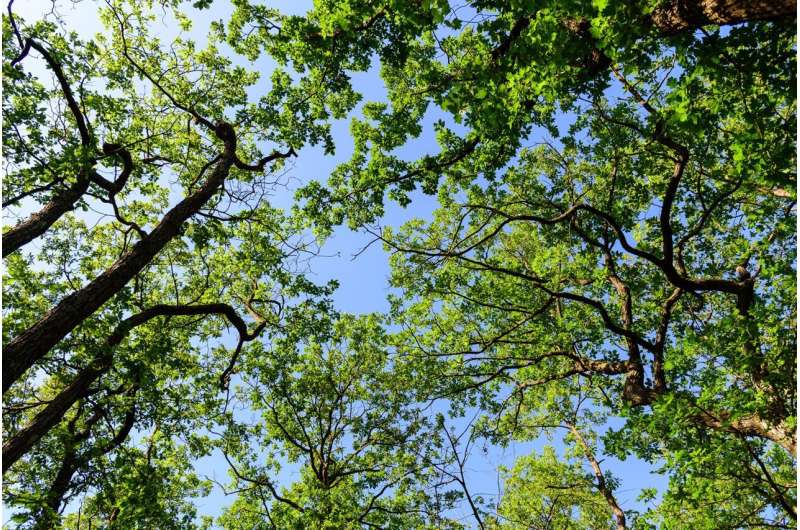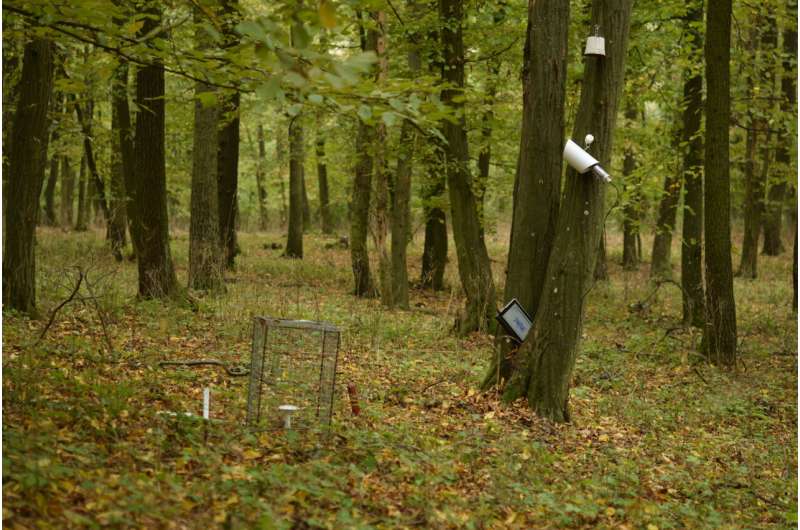This article has been reviewed according to Science X's editorial process and policies. Editors have highlighted the following attributes while ensuring the content's credibility:
fact-checked
peer-reviewed publication
trusted source
proofread
Soil drought weakens forest microclimatic cooling, study finds

Scientists from Stockholm University have investigated the mechanisms that create cool microclimates beneath forest canopies during warm and dry summer days. The study reveals how canopy shading and water evaporation together create cooler forest microclimates compared to temperatures outside forests. The article is published in Agricultural and Forest Meteorology.
"The findings are alarming in the context of climate change as more frequent and more severe droughts may threaten the cooling functions of forests," says Caroline Greiser, a researcher at the Physical Geography Department, Stockholm University, and leading author of the study.
Forests can buffer hot temperature extremes—a natural air conditioning effect. They do so by providing shade and by evaporating and transpiring water. "Imagine forests sweating in the heat to keep their internal temperature low," says Caroline Greiser and continues: "We need to drink a lot to be able to sweat, and forests need soil water."
The study, spanning four consequent summer seasons and based in temperate broadleaf forests in Central Europe, brings to light the consistent finding that daily maximum temperatures in forest understories are, on average, two °C cooler than their surroundings. Small tree seedlings, as well as much of the forest biodiversity, depend on these buffered forests' microclimates.

Drier soils create a weaker cooling effect
The research team found that higher soil moisture levels improved the cooling effect in forests, emphasizing the combined contributions of canopy shade, soil water evaporation and plant transpiration to cooler microclimates.
"We used a network of small temperature and moisture loggers spread across different forest patches to link daily fluctuations of sub-canopy temperature to canopy cover and daily fluctuations of soil moisture at a given site," says Caroline Greiser. She adds, "Forest microclimate research often focuses on canopy cover as a major driver of understory cooling. Our study highlights the role of soil water in buffering understories from the rising heat."
As climate change causes more disturbances to forest canopies and increases the risk of soil droughts, forests may lose their cooling function. The researchers therefore emphasize the significance of incorporating soil moisture into models predicting forest microclimate, biodiversity, and tree regeneration.
More information: Caroline Greiser et al, Higher soil moisture increases microclimate temperature buffering in temperate broadleaf forests, Agricultural and Forest Meteorology (2023). DOI: 10.1016/j.agrformet.2023.109828
Journal information: Agricultural and Forest Meteorology
Provided by Stockholm University




















